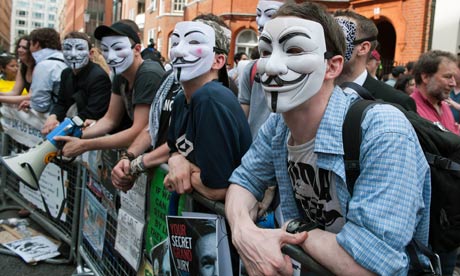Five years on from the last crash, quantitative easing remains the weapon of choice for governments unwilling to challenge the current economic model

Illustration by Matthew Richardson
Just as people started to think that things were getting calmer – if not exactly brighter – in the rich countries, things have become decidedly slower and more volatile in the so-called "emerging market" economies. At the centre of the (unwanted) attention at the moment is India, which is seeing a rapid outflow of capital and thus a rapid fall in the value of its currency, the rupee. But many other emerging market economies, other than China, have also seen similar outflows and weakening of currencies recently.
This is not necessarily a bad development. The currencies of many emerging market economies, especially those of Brazil's real and South Africa's rand, had been significantly over-valued, damaging their export competitiveness. Devaluation could actually help these economies put their growth on a more sustainable path.
However, people are rightly worried that too rapid flows of capital out of these countries may cause excessively fast devaluations, resulting in currency crises and thus financial crises, as happened in eastern Asia back in 1997. Situations like this can arise because the currencies of the emerging countries have been propped up by something that can quickly disappear – that is, the large inflows of speculative capital from the rich countries. Given its nature, such capital is ready to pull out at any moment, as an increasing portion of it has been doing for several months.
This is a stark reminder that things are still not well with the world economy, five years on from the outbreak of the biggest financial crisis in three generations in September 2008.
We have had such huge capital inflows into the emerging economies mainly because of quantitative easing (QE) by the central banks of the US, Britain, and other rich countries, which injected trillions of dollars into the world economy, in a desperate attempt to revive their moribund economies.
In its initial phase, QE may have had acted like an electric shot to someone who just had a cardiac arrest. But subsequently its boosting effects have been largely through the creation of unsustainable asset bubbles – in the stock market, in property markets and in commodity markets – that may burst and generate another round of financial crises. On top of that, it has caused much collateral damage to developing countries, by overvaluing their currencies, helping them generate unsustainable credit booms, and now threatening them with the prospect of currency crises.
If its effects are at best debatable and at worst laying the ground for the next round of financial crises, why has there been so much QE? It is because it has been the only weapon that the rich country governments have been willing to deploy in order to generate an economic recovery.
QE has become the weapon of choice by these governments because it is the only way in which recovery – however slow and anaemic – could be generated without changing the economic model that has served the rich and powerful so well in the past three decades.
This model is propelled by a continuous generation of asset bubbles, fuelled by complex and opaque financial instruments created by highly leveraged banks and other financial institutions. It is a system in which short-term financial profits take precedence over long-term investments in productive capabilities, and over the quality of life of employees. If the rich countries had tried to generate recovery through any other means than QE, they would have to seriously challenge this model.
Recovery driven by fiscal policy would have involved an increase in the shares of public investment and social welfare spending in national income, reducing the share going to the rich. It would have generated new public sector jobs, which would have weakened the bargaining power of capitalists by reducing unemployment.
Recovery based on a "rebalancing" of the economy would have required policies that hurt the financial sector. The financial system would have to be re-engineered to channel more money into long-term investments that raise productivity. Exchange rates would have to be maintained at a competitive level on a permanent basis, rather than at an over-valued level that the financial sector favours. There would have to be greater public investment in the training of scientists and engineers, and greater incentives for them to work in and with the industrial sector, thus shrinking the recruitment pool for the financial industry.
Given all this, it is not a big surprise that those who benefit from the status quo have persisted with QE. What is surprising is that they have actually strengthened the status quo, despite the mess they have caused. They have successfully pushed for cuts in government spending, shrinking the welfare state to the extent that even Margaret Thatcher could not manage. They have used the fear of unemployment in an environment of shrinking social safety nets to force workers to accept more unstable part-time jobs, less-secure contracts (zero-hour contracts being the most extreme example), and poorer working conditions.
But is this maintenance, or even fortification, of the ancient regime likely to continue? It may, but it may not. Greece, Spain, and other eurozone periphery countries could explode any day, given their high unemployment and deepening strains of austerity. In the US, which is considered the home of quiescent workers, the call for living wages is becoming louder, as seen in the current strikes by fast-food restaurant workers. The British are (overly) patient people, but they may change their mind when the full extent of budget cuts unfolds in the coming months.
All of these stirrings may amount to little, especially given the weakened state of trade unions, except in a few countries, and the failure of the parties on the left of centre to come up with a coherent alternative vision. But politics is unpredictable. Five years after the crisis, the real battle for the future of capitalism may be only just beginning.






